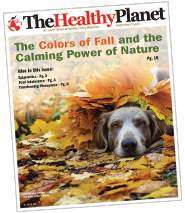By Linda Wiggen Kraft
Native bees are the unsung heroes of pollination. Their relatives, the European honeybees, get most of the attention and press about the need to save bees. But it is the native bees, also pollinators and way more important in the job of pollinating that most of us know, who also need our help. In fact, native bees and pollinators some say are in worse shape than honeybees.
There are over 425 species of native bees in Missouri. These native bees are responsible for lots of pollination, often of crops not pollinated by honeybees. Some native bees are active early in the spring before honeybees so early blooming trees and flowers rely on them for pollination. Mason bees and bumble bees are two native bees that are important pollinators. Bumble bees make a buzzing vibration that some plants, like tomatoes, need before they drop their pollen. One Blue Orchard Mason bee can pollinate over 2000 flowers in a day, the same amount of flowers that 100 honey bees would pollinate. Some species of native bees are specific to individual plants. Squash bees only pollinate squash plants. Blueberry bees get 95% of their pollen from blueberry flowers.
Loss of habitat and use of pesticides are the two main causes of the decline of native bees. We as gardeners can create habitat and homes for these important pollinators. Plant lots of flowering plants that bloom from early spring to late fall. Natives are best because they have evolved with the native bees. But there are also many non-natives plants that bees love. Trees, shrubs, perennials and annuals all have flowers and pollen.
Pollinators also need homes. Unlike honeybees that live in colonies, mainly in man made structures, native bees are mostly solitary bees that live in tunnel nests or underground. Blocks of wood drilled out with tunnels are good nests for mason and other native bees. Plant stems and paper straws can also be used. For ground nesting bees, a space of bare ground with no mulch will attract them and let them make a home.
Pesticides are also best avoided, even some of the organic ones. Reduce the size of the lawn and grow flowering plants. Cut down on herbicides and insecticides. The most lethal insecticides are the neonictinoids. These are systemic poisons that stay in all plant cells, including the pollen. Check labels for this non-organic pesticide* and ask your nursery if the plants they sell were grown with these pesticides. Some organic pesticides should be used with caution including spinosad, horticultural oil and pyrethrins. These should be used late in the day after bees are active. Spraying the entire yard for mosquito control may get rid of some mosquitoes, but it kills off beneficial insects including bees and other pollinators.
Let your garden be a home and habitat for these important and unsung heroes of pollination. Take a pledge with the Xerces Society (www.Xerces.org) to “Bring Back the Pollinators”, with 4 simple steps: provide nectar and pollen, create pollinator homes, stop pesticide use and sign the pollinator protection pledge. There also have “Pollinator Habitat” signs that can be hung in the garden.
Linda Wiggen Kraft is a landscape designer who creates holistic and organic gardens. She is also a mandala artist and workshop leader. Visit her blog: www.CreativityForTheSoul.com/blog or website: www.CreativityForTheSoul.com. Contact her at 314 504-4266.
*Check out the Xerces Society’s website for specifics about pesticides and tons of information about pollinators. A presentation by Ed Spevak, Director of Center for Native Pollinator Conservation, will be held at The Green Center, May 12th 6-8 pm. Call 314 725-8314 for reservations.


